 Triton-1: Spetsnaz’s unknown Swimmer Delivery Vehicle (SDV)
Triton-1: Spetsnaz’s unknown Swimmer Delivery Vehicle (SDV)
HERE
The rounded teardrop profile of the Spetsnaz’s two-man Triton-1M Swimmer Delivery Vehicle (SDV) is relatively well known within the context of naval special forces. Particularly anyone who has researched the Swedish submarine incursions during the Cold War will have come across it. But there is an earlier Triton-1 which was a better kept secret and which remains little-known today.

The offensive potential of the Triton-1 was put to the test in October 1961 when an ace crew conducted a demonstration sneak attack at Tallinn in Estonia, then part of Soviet territory. The crew passed through the harbor defenses unobserved and surfaced within 30m (30 yards) of a submarine tied up at the pier. Still undetected, they sank from sight and made the return journey, again passing through the boom defenses unnoticed. It was a powerful demonstration to the Soviet Navy and ensured the future of the frogmen and their craft.

CLICK for high-resolution image.
Starting in the 1950s Russian engineers were working on a larger two-man craft which mixed features from both the British Chariot Mk.II and Italian SSB vehicles. The Triton-1 had a rudimentary appearance with visible bolts and rivets, and external control cables running the whole length of the craft. Unlike the cramped confines of the better-known Sirena, which was limited to the size of the torpedo to allow it to be carried inside the host submarine, the Triton had a significantly larger diameter allowing much more room for the crew. They sat comfortably in a upright position under a Perspex canopy.
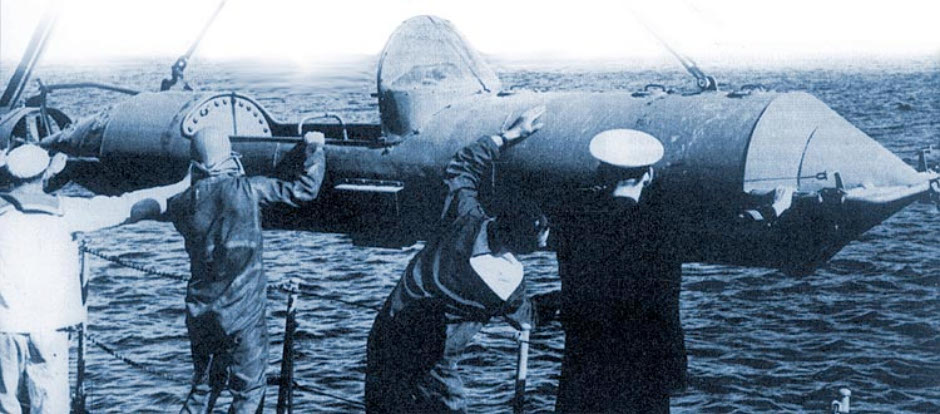
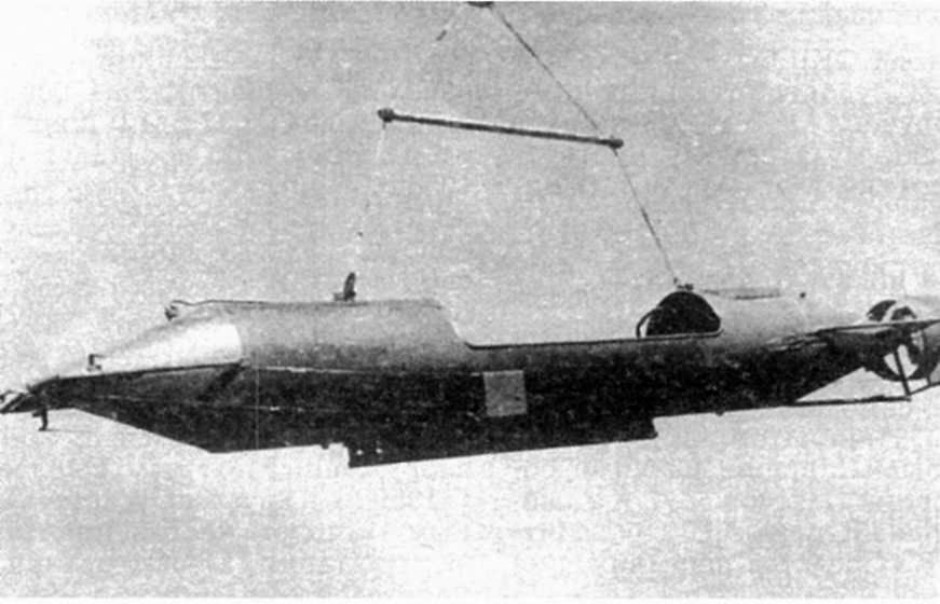
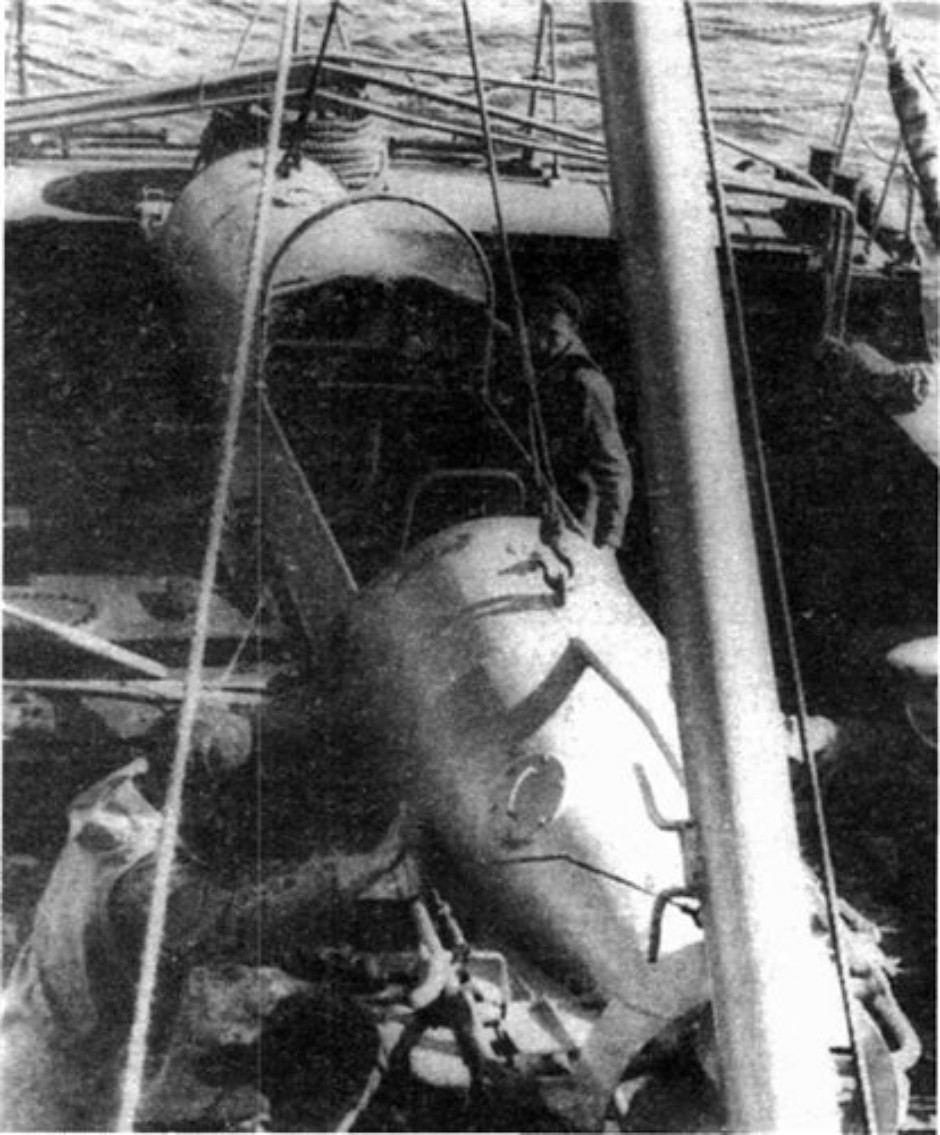
THE book on Special Forces subs Covert Shores 2nd Edition. A world history of naval Special Forces, their missions and their specialist vehicles. SEALs, SBS, COMSUBIN, Sh-13, Spetsnaz, Kampfschwimmers, Commando Hubert, 4RR and many more.
Check it out on Amazon
The 1.5kw (2hp) electric motor drove a single large-diameter three-blade prop which was protected by a shroud. The rear hydroplanes were mounted in front of the prop, protected by a fender running around the outside, and the rudder behind the prop. The bow planes were also protected by fenders running around them, and were in the extreme bow either side of the witch’s hat nosecone. The fenders actually resembled the postwar British Chariot modifications although it’s not clear if the Soviets were aware of these.
Although the prototype featured an open cut-out cockpit, in a sign of modernity the production model had a watershield and the crew could be covered by an enclosed canopy to protect them from the currents. Despite this, performance was still modest at just 2.3kt which was slower than the rival Sirena. It was slower and shorter ranged, but more comfortable and about the same weight at 750kg (1,650lb) as the Sirena. Crucially however it was just fast enough to operate in moderate currents where the Proteus one-man diver tugs could not make headway. One design flaw not rectified was that the canopy hinged sideways to starboard, meaning that it could not be opened while running on the surface. Like other SDVs of this era the earliest versions were not particularly combat ready, but offered the basis for development of tactics and capabilities.

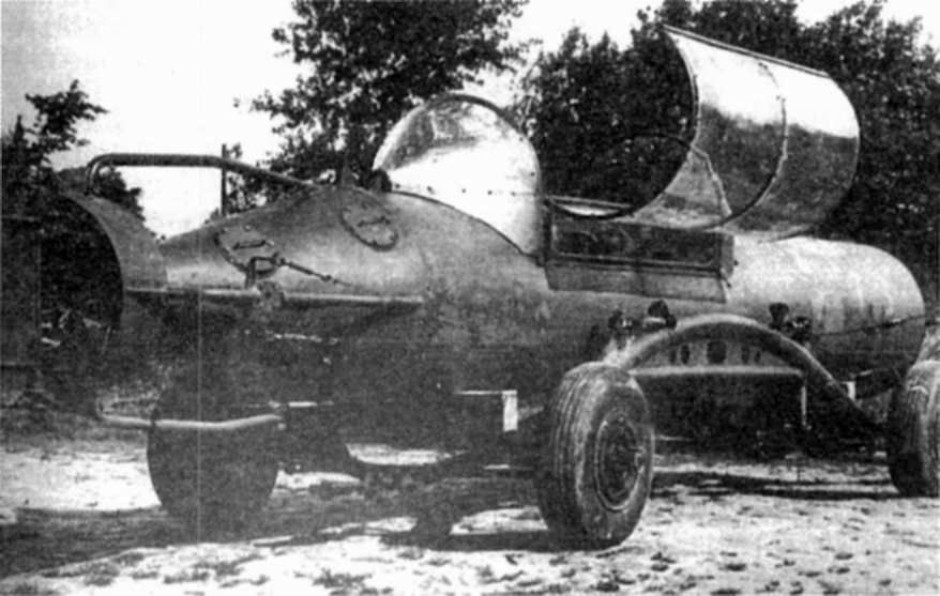
By the mid-1960s some eighteen Triton1s were in service, including the two prototypes. They were deployed in the Baltic, Black Sea and Pacific fleets. The next generation of Triton, the follow-on Triton-1M and larger Triton-2, were designed in the late 1960s in parallel to the USN’s Mk.VIII and Mk.IX SDVs. Like the SEALs the Spetsnaz decided that they needed two SDVs, a two-man type optimized for ship attack, and a six-man type for transporting over-the-beach teams. The similarity to their American counterparts ends here. The two-man Project-907 Triton-1M was ready for testing in 1973, and replaced the Triton-1 from the late 1970s.
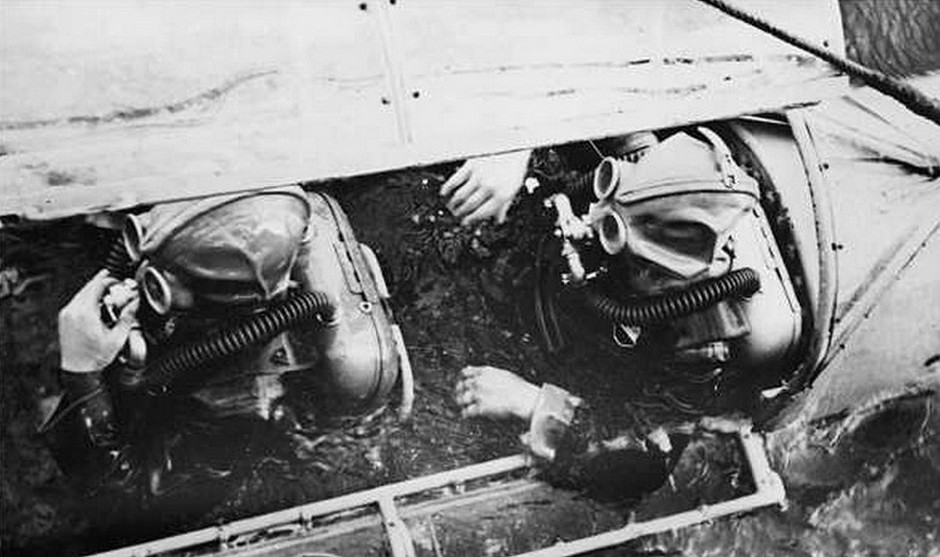
The crew of a Triton-1 using the IDA-64 series rebreather. This was an earlier type of rebreather than the better known IDA-71. This photo apparently shows Spetsnaz operators from 561-ORMP (561-й ОМРП) based in Kalingrad in the Baltic.
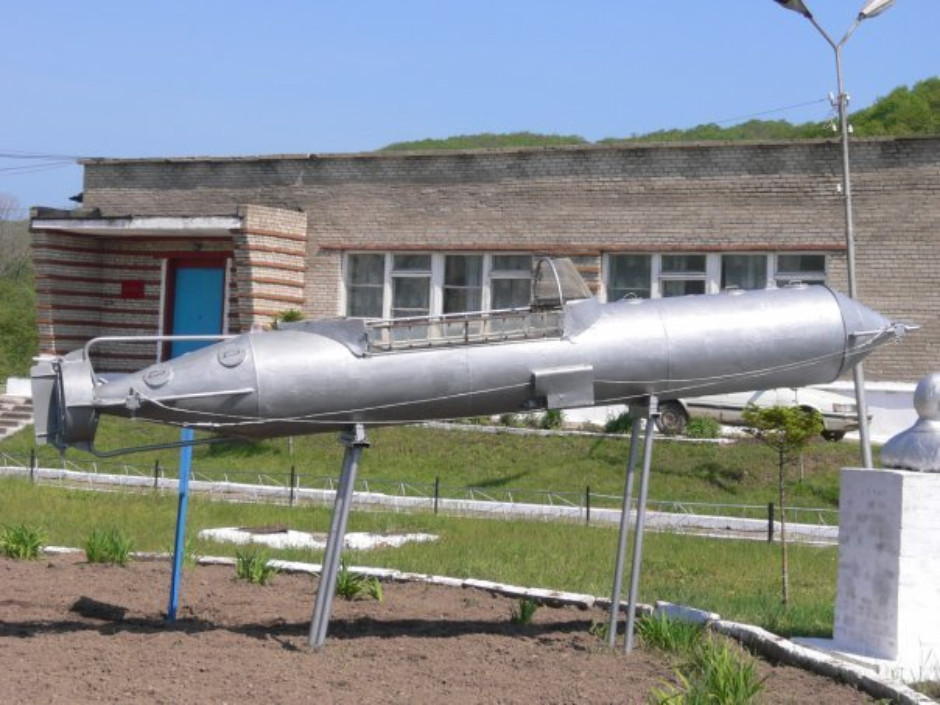
Today some Triton-1s are still used as gate-guards at Spetsnaz bases where their remoteness ensures that they are rarely photographed.
Related articles (Full index of popular Covert Shores articles)

 Naval Spetsnaz in Hybrid Warfare (Russian SDVs and DPVs)
Naval Spetsnaz in Hybrid Warfare (Russian SDVs and DPVs)

 SDV Mk.9 SEAL Delivery Vehicle
SDV Mk.9 SEAL Delivery Vehicle

 DGSE's SDVs
DGSE's SDVs

 British SDV developmemts in 1960s (Dick Tuson)
British SDV developmemts in 1960s (Dick Tuson)

 Cos.Mo.S CE2F chariot
Cos.Mo.S CE2F chariot

 SubCat SDV
SubCat SDV

 Vogo 'Chariot' SDVs (SDV-300, SDV-340...)
Vogo 'Chariot' SDVs (SDV-300, SDV-340...)

 Triton-NN Submersible Boat
Triton-NN Submersible Boat
THE book on Special Forces subs Covert Shores 2nd Edition. A world history of naval Special Forces, their missions and their specialist vehicles. SEALs, SBS, COMSUBIN, Sh-13, Spetsnaz, Kampfschwimmers, Commando Hubert, 4RR and many more.
Check it out on Amazon


